Giant Rhubarb and Hibiscus Cornmeal Scone
For the rhubarb-curious and anyone who stresses over dividing scones - I know you’re out there!
I love rhubarb.
I love how assertive and tartly vegetal it is in its raw form and how it collapses into mellowed strands of neon pink at the mere mention of heat. Like ramps, you either love them or you wait for them to quickly fade from menus as we inch closer to the “real” offerings of warmer weather. In many places, rhubarb grows wild like a common weed while in other places, chiefly the “rhubarb triangle” of England, it’s carefully grown in complete darkness lit only by the light of a farmer’s candle during harvesting. This process is referred to as “forcing”.
Forcing encourages the rhubarb to grow taller as the stalks reach up in search of light. Their fibrous lengths swell with the glucose that would have been used to grow large leafy tops for absorbing sunlight. This all serves to make them sweeter and more vibrantly pink than their light dwelling siblings. Forced rhubarb is so highly prized that in 2010 it was granted Protected Designation of Origin status in Europe. There’s a mad dash amongst bakers to find and use either variety of rhubarb, it’s often the first flash of color in their pastry cases after a fall and winter of brown and beige offerings.
In graduate school, one of the best things a professor ever did for me was to gift me a huge plastic bag of rhubarb that he had cut down from his yard. At this point in my program I was mentally checked out of working in the studio and was finding more joy in my kitchen than anywhere else. My professor was simply seeking to rid his yard of unwanted rhubarb, but at the time it felt like I was being recognized for passions outside of the stressful academic environment I had found myself in.
With the gifted rhubarb I made a tart, a double crust pie with strawberries, and even attempted to make jam for the first time. I was still so new to baking but it was exciting to have this alien-like ingredient to play with. I didn’t want it to end. When my mom and aunt visited for my graduation a year later I made a rhubarb and coconut cream tart for dessert. It was the first time I had cooked for my family in my own place away from home. I think about my time in Michigan every time I see a rhubarb pastry now, a happy reminder of that meal and the new spark of passion I was beginning to discover.
Today’s Recipe…
If you’ve followed me for any length of time, you know that I love scones. On a good day i’m an endless well of scone ideas and i’ve made thousands of them by now. I wanted to shake things up with this recipe though - to have a little fun. This “scone” leans a little more towards cornbread in taste and closer to muffin-top in texture. It’s soft, a little cakey, and I don’t think it could ever be described as dry. The fun of the large size is getting to slice it up however you see fit for serving so that everyone gets the perfect amount of poached rhubarb.
This more gentle poaching technique comes from one of my favorite pastry books, The Last Bite by Anna Higham. Her book is an extremely season-focused manual for pastries and plated desserts and features separate chapters on forced and standard rhubarb. I highly recommend it.
Hibiscus tastes fruity and a little tart, its flavor and color are lovely paired with rhubarb. You can add a little water and ice to the leftover poaching liquid for a refreshing drink similar to Agua de Jamaica, or use it as the base for a cocktail.
Because rhubarb can be hard to source for some folks, I’ve also developed this recipe to use strawberries with the addition of a little vinegar. This brings back some of the tartness missing from the rhubarb.
Hibiscus and Orange Poached Rhubarb or Strawberries
3 1/2 cups (794g) water
100g light brown sugar
4 strips fresh orange peel (use a vegetable peeler)
40g dried hibiscus flowers
200g rhubarb or strawberries
2 tablespoons rice wine vinegar (if using strawberries)
Chop the rhubarb stalks crosswise into equal sized pieces. These pieces can range from 1/8 inch to 1/2 inch. The thicker the slices, the more crunchy your rhubarb will remain after poaching. The thinner slices will be softer and will “melt” away into the scones. If using strawberries, slice them into 1/2 inch x 1/2 inch pieces. Place the rhubarb or strawberries into a heatproof container that can hold all of the poaching ingredients.
Place the water, sugar, orange peel, and hibiscus into a medium sauce pan over medium high heat. Stir to resolve the sugar as the water heats up. When the mixture begins to boil, turn off the heat and carefully pour the mixture over the rhubarb. If using strawberries, allow the mixture to stop boiling and sit for 5 minutes before stirring in the vinegar and pouring over the strawberries. If you pour while it’s boiling the strawberries might break down.
Allow the rhubarb/berries to cool to room temperature before covering and moving into the fridge for at least 4 hours (overnight is best) to chill and infuse in the poaching liquid.
Big Cornmeal Scone
200g all-purpose flour
90g medium to coarse ground cornmeal
60g white sugar
12g (1 tablespoon) baking powder
1 teaspoon salt
113g unsalted butter, cut into 1/2 inch cubes, cold
rhubarb/strawberries from above recipe, drained
200g buttermilk, cold
3 tablespoons coarse sugar, such as Demerara (optional)
Preheat your oven to 375F with a rack in the upper middle position. Line a sheet tray with parchment paper. Use a paper towel to gently blot the drained fruit to remove excess moisture, set aside.
In a large bowl add the flour, cornmeal, sugar, baking powder, and salt. Whisk together. Add the cubed butter to the bowl and begin to pinch each cube flat with your fingers and thumbs. Work through the butter several times, smearing the flattened pieces into the flour mixture until you have a sandy texture with a few pea-sized pieces of butter here and there.
Add the poached fruit to the bowl of flour and toss gently to coat with the flour. When combined, use a fork to stir in the buttermilk. The mixture should come together with minimal dry flour left in the bottom of the bowl. Pour the dough onto the lined tray and use your hands to pat and shape it into a rectangle about 1 inch tall. Sprinkle the top with coarse sugar and bake for 30-35 minutes. Let cool for 30 minutes before using the parchment or spatulas to lift the scone onto a cutting board. Use a bread knife to slice into whatever sized slices you’d like and enjoy.
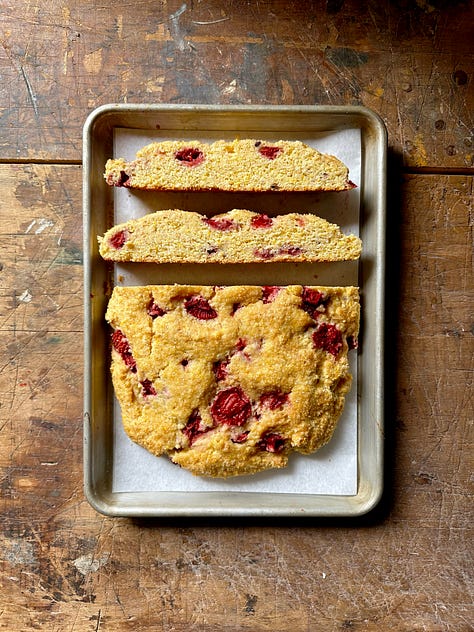
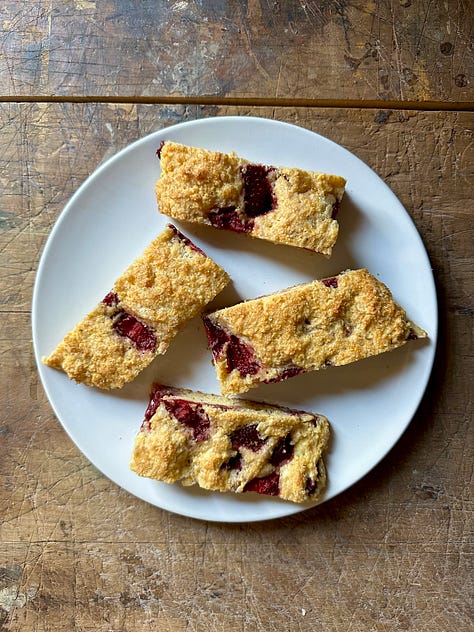
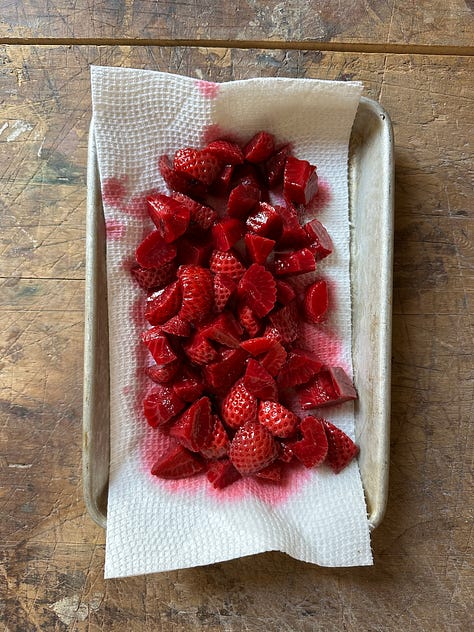
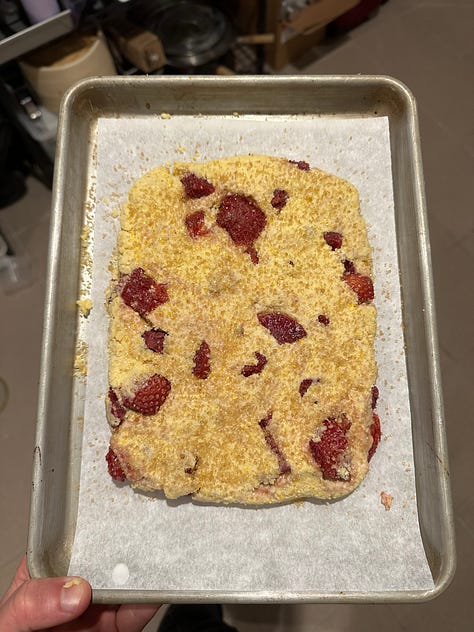
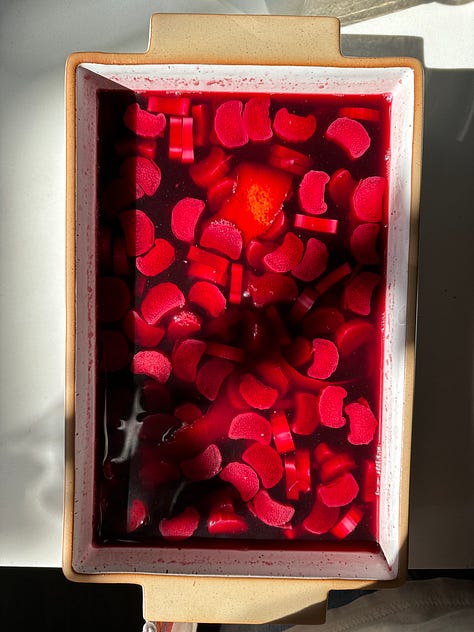
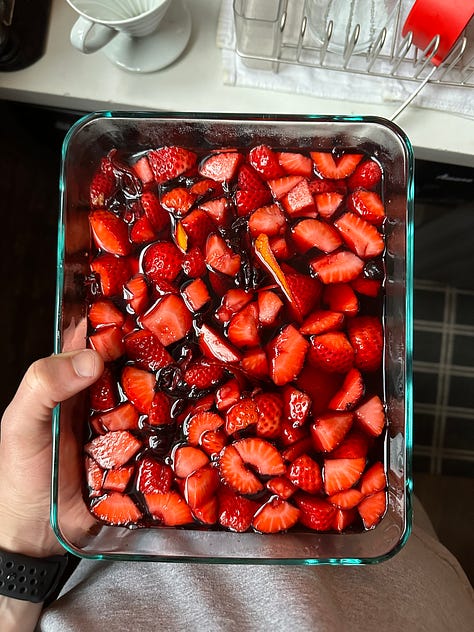





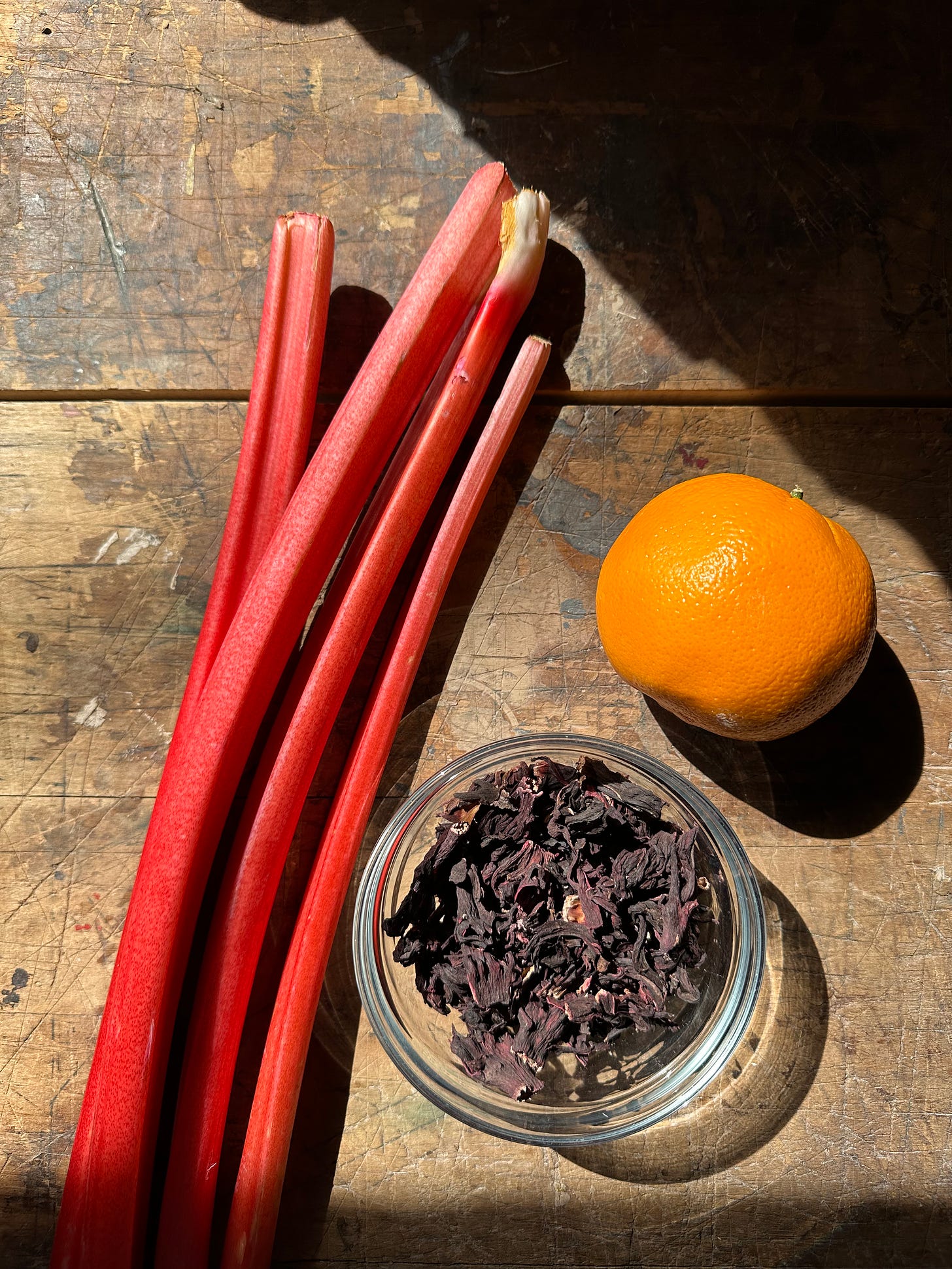
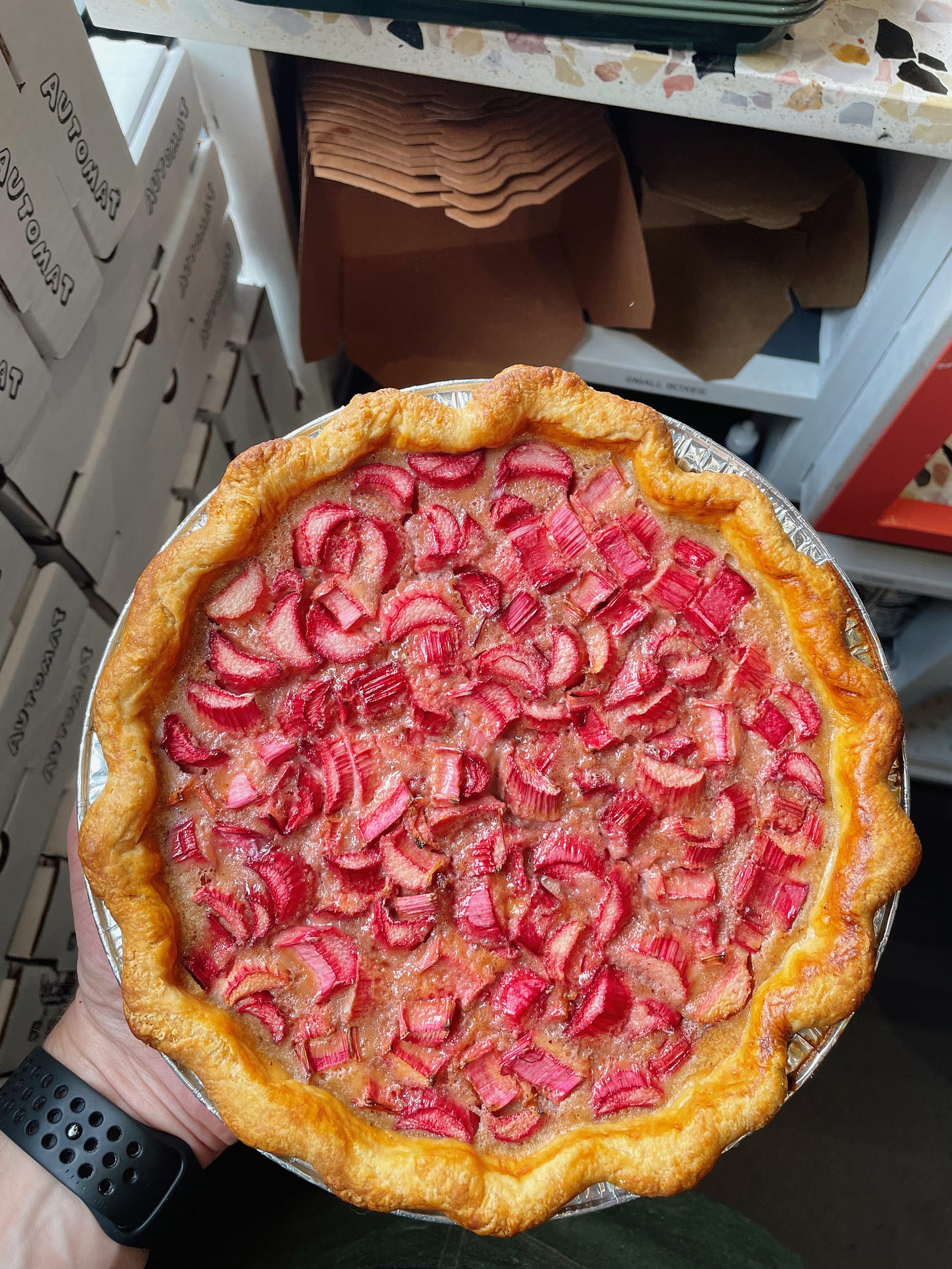
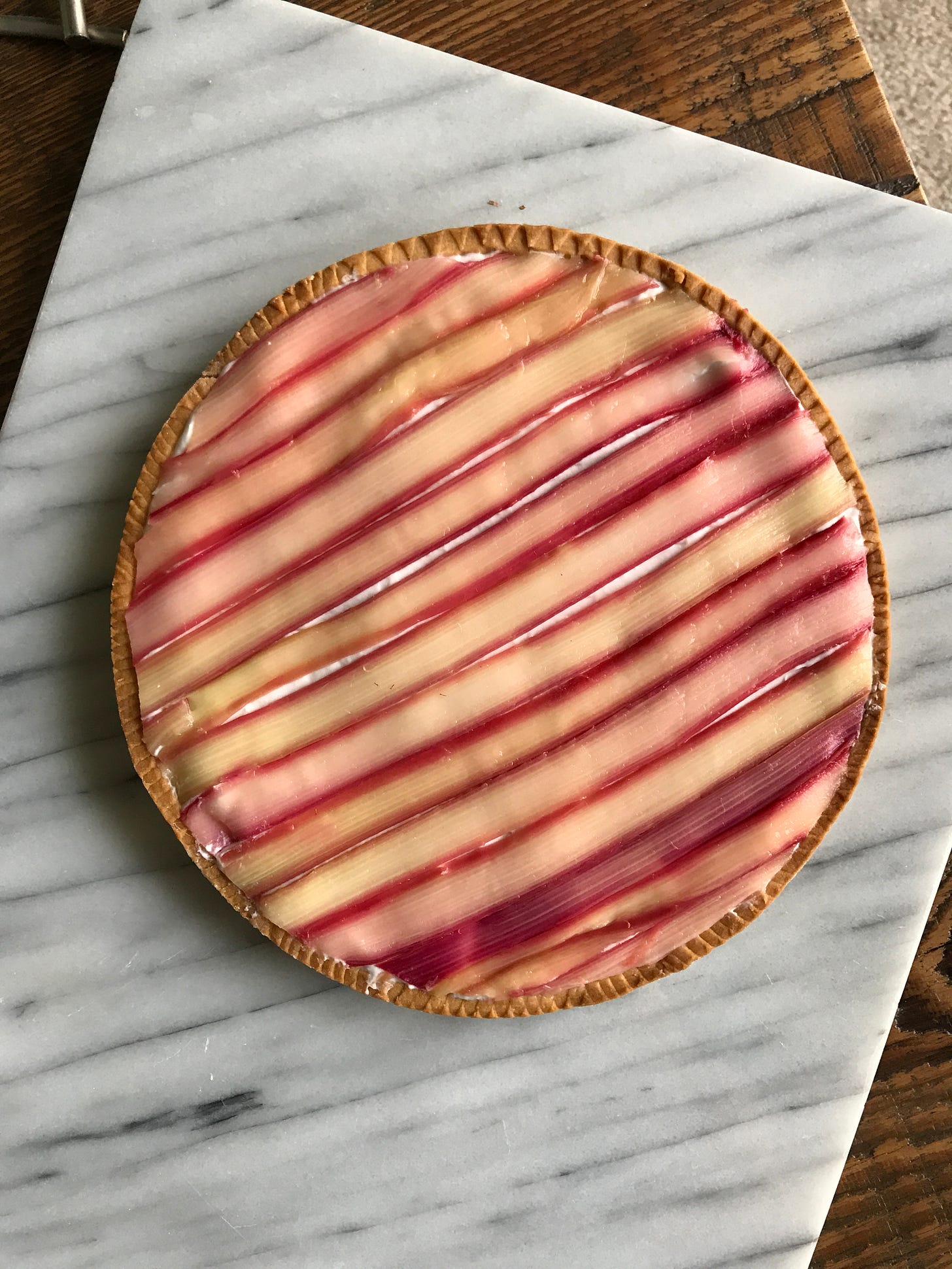
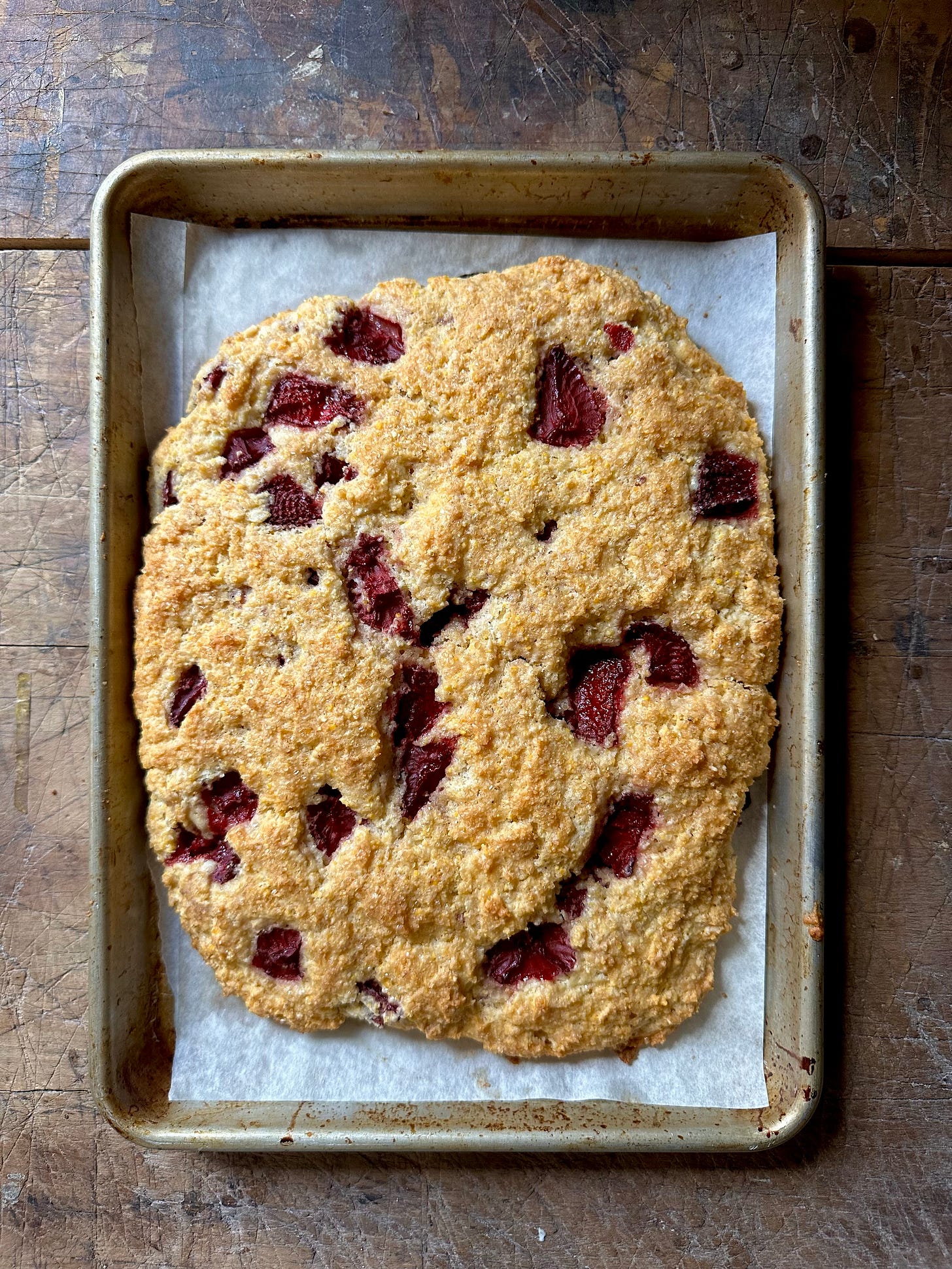
You’re so lucky you found some rhubarb. I can’t find it anywhere!
Love everything about this! Love how it is both playful (LOVE the idea of a giant scone) but also it sounds utterly delicious!